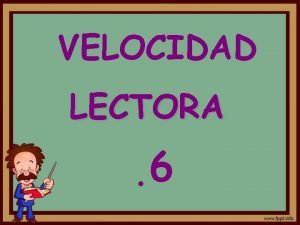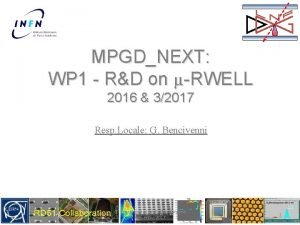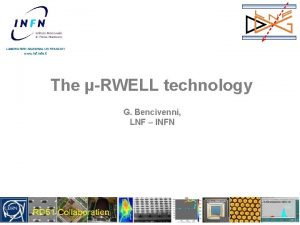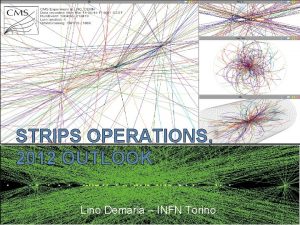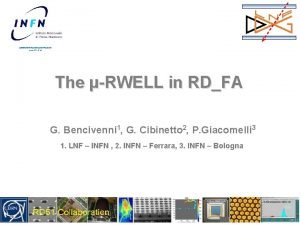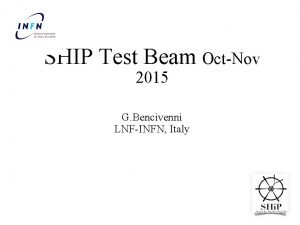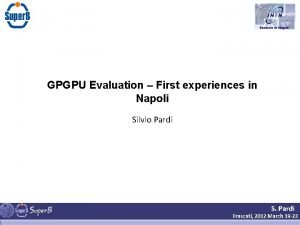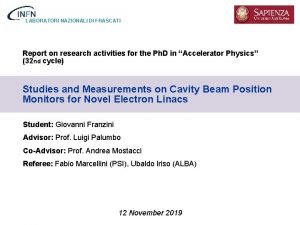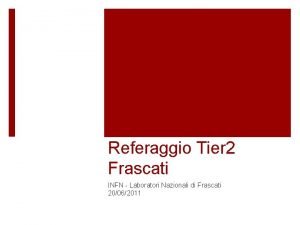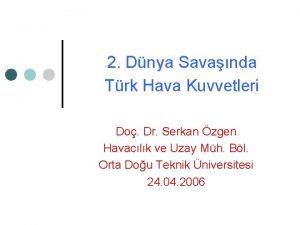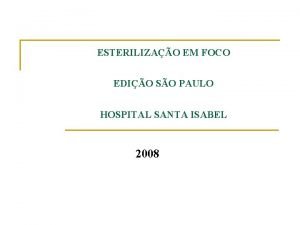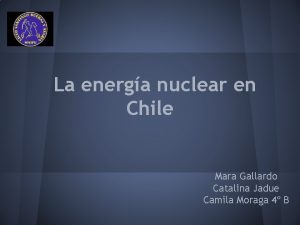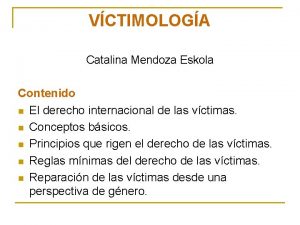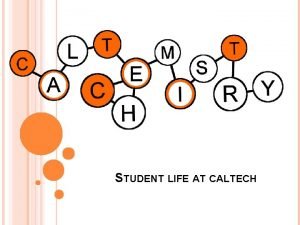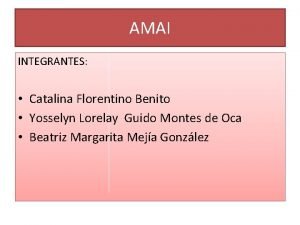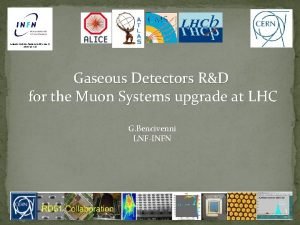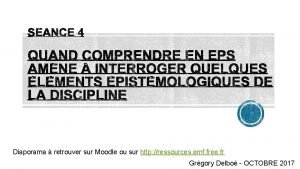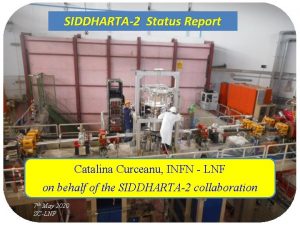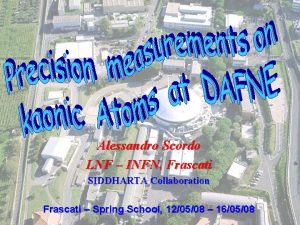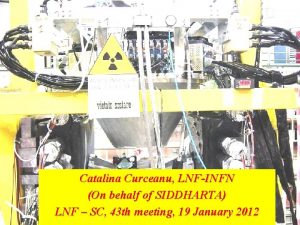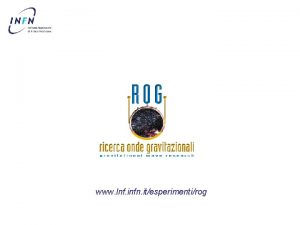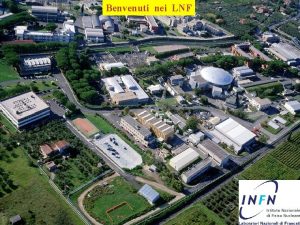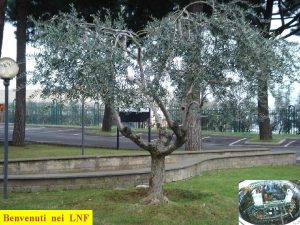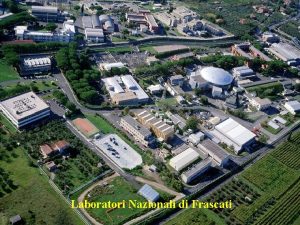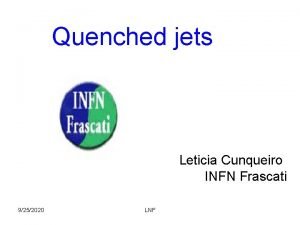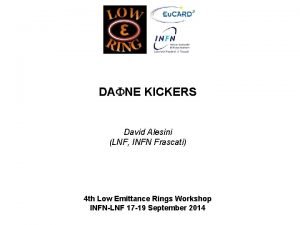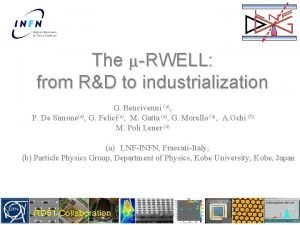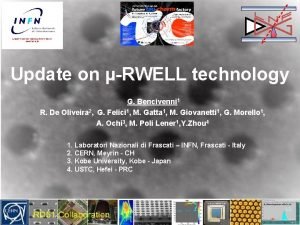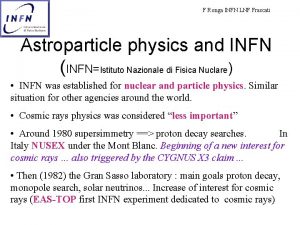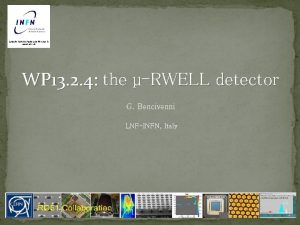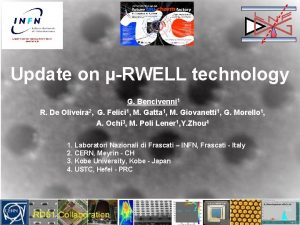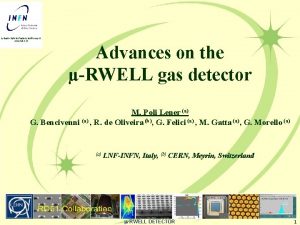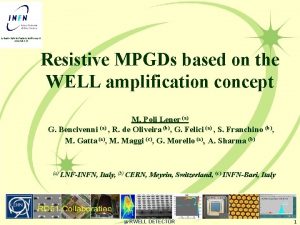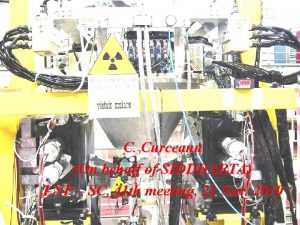Catalina Curceanu LNF INFN Frascati Quest for the













































![Comparison of results Shift [e. V] Reference KEK E 570 +2± 2± 2 PLB Comparison of results Shift [e. V] Reference KEK E 570 +2± 2± 2 PLB](https://slidetodoc.com/presentation_image/4d6393fa5281b204015d06b7b5f2c304/image-46.jpg)
























- Slides: 70

Catalina Curceanu LNF – INFN, Frascati Quest for the strange dark stuff in the Universe Frscati, 27 nov. 2015

The Standard Mode and the “normal” matter

The Standard Model

Is there any place for strangeness in the Universe?

Could strangeness play a role in neutron stars?

Could strangeness play a role in neutron stars?


Low-energy kaon-nuclei Interactions studies

How strong is the interaction of kaons (strangeness) with nuclear matter?

How strong is the interaction of kaons (strangeness) with nuclear matter?

The low-energy kaon-nucleon/nuclei interaction studies are fundamental for understanding QCD in non-perturbative regime: - Explicit and spontaneous chiral symmetry breaking (mass of nucleons) Dense baryonic matter -> Neutron (strange? ) stars EOS Dark matter with strangeness? Role of Strangeness in the Universe from particle and nuclear physics to astrophysics


The DAFNE collider or the best possible beam of low energy kaons

The DAFNE principle K+ e+ e+ eee- KFlux of produced kaons: about 1000/second eee-

DAΦNE, since 1998

Φ → K- K+ (49. 1%) Monochromatic low-energy K- (~127 Me. V/c) • Less hadronic background due to the beam ( compare to hadron beam line : e. g. KEK /JPARC) Ideal for low-energy kaon physics: kaonic atoms Kaon-nucleons/nuclei interaction studies

The DAFNE collider the best possible beam of low energy kaons Kaonic atoms DEAR SIDDHARTA-2 Hypernuclei FINUDA Low-energy Kaon-nuclei (deeply bound) FINUDA AMADEUS

The DAFNE collider the best possible beam of low energy kaons Kaonic atoms DEAR SIDDHARTA-2 Hypernuclei FINUDA Low-energy Kaon-nuclei (deeply bound) FINUDA AMADEUS

KAONNIS (Integrated Initiative): Unique studies of the low-energy kaon-nucleon/nuclei interactions -> low-energy QCD in strangeness sector with implications from particle (L(1405)) and nuclear (kaonic nuclear clusters? ) physics to astrophysics (equation of state -> role of strangeness) - exotic atoms: SIDDHARTA data analyses and SIDDHARTA-2 experiment - kaon-nuclei interactions at low-energies: AMADEUS - AMADEUS carbon target and KLOE 2002 -2005 data analyses in collaboration with KLOE Support from : HP 3 – WP 9: WP 24; WP 28 is fundamental

SIDDHARTA(-2) SIlicon Drift Detector for Hadronic Atom Research by Timing Applications • • • LNF- INFN, Frascati, Italy SMI- ÖAW, Vienna, Austria IFIN – HH, Bucharest, Romania Politecnico, Milano, Italy TUM, Munchen, Germany RIKEN, Japan Univ. Tokyo, Japan Victoria Univ. , Canada Zagreb Univ.

The scientific aim the determination of the isospin dependent KN scattering lengths through a ~ precision measurement of the shift and of the width of the Ka line of kaonic hydrogen and the first measurement of kaonic deuterium Measurements of kaonic Helium 3 and 4 as well (2 p level)

Kaonic atom formation e- n ~ sqrt(M*/me) n’ ~ 25 (for K-p) (M* : K-p reduced mass) highly-excited state K- Auger Electron 1) Initial capture 2) Cascade K 3) Strong interaction K- deexcite X-ray Nucleus 4) Absorption Width stopped inand a >target medium e. g. The strong int. Shift width Radiative trans. 1 s forwidth K-p, K-d of last orbit • • 2 p for K-He

Kaonic cascade and the strong interaction n s p d 4 3 2 E 2 p Kb G 1 Ka ~ 6. 3 ke. V = DE 2 p 1 s } e E 1 s f

Antikaon-nucleon scattering lengths Once the shift and width of the 1 s level for kaonic hydrogen and deuterium are measured -) scattering lengths (isospin breaking corrections): e + i G/2 => a. K-p e. V fm-1 e + i G/2 => a. K-d e. V fm-1 one can obtain the isospin dependent antikaon-nucleon scattering lengths a. K-p = (a 0 + a 1)/2 a. K-n = a 1

SIDDHARTA Scientific program Measuring the KN scattering lengths with the precision of a few percent will drastically change the present status of low-energy KN phenomenology and also provide a clear assessment of the SU(3) chiral effective Lagrangian approach to low energy hadron interactions. 1. Breakthrough in the low-energy KN phenomenology; 2. Threshold amplitude in QCD 3. Information on L(1405) 4. Contribute to the determination of the KN sigma terms, which give the degree of chiral symmetry breaking; 5. 4 related alado with the determination of the strangeness content of the nucleon from the KN sigma terms

SIDDHARTA


Silicon Drift Detector - SDD 1 Chip : 1 cm 2

2 cm 1 cm x 144 SDDs


SIDDHARTA overview Target Detect by SDDs K- e- Φ 510 Me. V/c y x z 127 Me. V/c Δp/p=0. 1% K+ Detect by two scintillators + e 510 Me. V/c 31




SDDs & Target (inside vacuum) Kaon detector


SIDDHARTA data

SIDDHARTA results: - Kaonic Hydrogen: 400 pb-1, most precise measurement ever, Phys. Lett. B 704 (2011) 113, Nucl. Phys. A 881 (2012) 88; Ph D - Kaonic deuterium: 100 pb-1, as an exploratory first measurement ever, Nucl. Phys. A 907 (2013) 69; Ph D - Kaonic helium 4 – first measurement ever in gaseous target; published in Phys. Lett. B 681 (2009) 310; NIM A 628 (2011) 264 and Phys. Lett. B 697 (2011); ; Ph. D - Kaonic helium 3 – 10 pb-1, first measurement in the world, published in Phys. Lett. B 697 (2011) 199; Ph D - Widths and yields of KHe 3 and KHe 4 - Phys. Lett. B 714 (2012) 40; ongoing: KH yields; kaonic kapton yields -> draft for publications SIDDHARTA – important TRAINING for young researchers

Kaonic Helium 3 and 4

Kaonic 4 old data KHe 4

Data taking periods of SIDDHARTA in 2009 K-He 4 data with Fe source 55 Fe source: Good for reduce sys. error on K-4 He Bad for “background” events on K-H, K-D Removed 55 Fe source in other data PLB 681(2009)310 Use of Mn Ka (5. 9 ke. V) from 55 Fe Systematic error = +/-2 e. V

KHe-4 energy spectrum at SIDDHARTA PLB 681(2009)310; NIM A 628(2011)264 K-He data taking Ti foil No-coincidence Target Fe 55 Degrader coincidence

Data taking periods of SIDDHARTA in 2009 DAFNE shutdown in Summer New alignment of setup Improve S/N ratio K-He 3 data (~4 days) 55 Fe source: Good for reduce sys. error on K-4 He Bad for “background” events on K-H, K-D Removed 55 Fe source in other data

Kaonic Helium-3 energy spectrum X-ray energy of K-3 He 3 d-2 p K-3 He (3 d-2 p) QED value: Ti Ka K-C K-O K-N ar. Xiv: 1010. 4631 v 1 [nucl-ex], PLB 697(2011)199 World First! Observation of K-3 He X-rays Determination of strong-interaction shift

K-4 He (3 d-2 p) PLB 697(2011)199 K-3 He (3 d-2 p) DAFNE shutdown in Summer
![Comparison of results Shift e V Reference KEK E 570 2 2 2 PLB Comparison of results Shift [e. V] Reference KEK E 570 +2± 2± 2 PLB](https://slidetodoc.com/presentation_image/4d6393fa5281b204015d06b7b5f2c304/image-46.jpg)
Comparison of results Shift [e. V] Reference KEK E 570 +2± 2± 2 PLB 653(07)387 SIDDHARTA (He 4 with 55 Fe) +0± 6± 2 PLB 681(2009)310 SIDDHARTA (He 4) +5± 3± 4 SIDDHARTA (He 3) -2± 2± 4 ar. Xiv: 1010. 4631, PLB 697(2011)199 *error bar

Phys. Lett. B 714 (2012) 40 the strong-interaction width of the kaonic 3 He and 4 He 2 p state http: //arxiv. org/abs/1205. 0640 v 1

Old kaonic He 4 measurements Average Theory: -0. 13+-0. 02 1. 8+-0. 05

K-d

Old average K-3 He width K-4 He width Figure 5: Comparison of experimental results. Open circle: K-4 He 2 p state; filled circle: K-3 He 2 p state. Both are determined by the SIDDHARTA experiment. The average value of the K 4 He experiments performed in the 70’s and 80’s is plotted with the open triangle.

Kaonic Helium results: - first measurements of KHe 3 and in gas He 4 - if any shift of 2 p level is present – is small - KHe 3 measurement took 3 days!!! – proves how EXCELLENT is SIDDHARTA-like method at DAFNE - SIDDHARTA-2 – can do much better: KHe 3, 4 at e. V and try measurement of 1 s levels!

Kaonic Hydrogen

Hydrogen spectrum EM value K-p Kα Kaonic hydrogen Kα Kβ higher KC 54 KC 65 Ti Kα KO 65 Ti Kβ KO 76 Deuterium spectrum simultaneous fit KC 75 KN 65 Cu Background estimation KAl 87

Residuals of K-p x-ray spectrum after subtraction of fitted background Kaonic hydrogen higher Kα EM value K-p Kα Kβ

KAONIC HYDROGEN results e 1 S= − 283 ± 36(stat) ± 6(syst) e. V G 1 S= 541 ± 89(stat) ± 22(syst) e. V

Kaonic Deuterium exploratory measurement



Kaonic Hydrogen results: - most reliable and precise measurement ever - need to go for Kd! -> SIDDHARTA-2

DAFNE represents (as always did) an (THE) EXCELLENT FACILITY in the sector of low-energy interaction studies of kaons with nuclear matter. It is actually the IDEAL facility for kaonic atoms studies as SIDDHARTA has demonstrated SIDDHARTA-2 team is ready to restart the measurements, having a multi-step strategy, strating with the Kaonic deuterium

SIDDHARTA– 2 61

The SIDDHARTA-2 setup, essential improvements • new target design • new SDD detectors • new SDD arrangement • vacuum chamber • more cooling power • improved trigger scheme • shielding and anti-coincidence (veto) 62

Target cell SDDs Kaon monitor upper scintillator SDDelectronic K- Interaction region Veto counter Kaon monitor lower scintillator K+ Kaonstopper: K+-K- discrimination 63

64

SIDDHARTA-2 setup 65

SIDDHARTA 2 100 cm 2 SDDs from SIDDHARTA active area / module = 22% time window = 500 ns (was 800 ns at SIDDHARTA) pickup) 200 cm 2 new SDDs active area / module = 64% time window = 20 ns (backplane signal - efficiency doubled - beam-background 1/25 - total background 1/2 100 pb-1 hydrogen Ka peak 2000 events S/B 7: 1 (was 1: 3 in SIDDHARTA last dataset ) sigma(shift) = 10 e. V sigma(width) = 22 e. V Ka peak 1500 events S/B 1: 3 sigma(shift) = 38 e. V sigma(width) = 125 e. V sigma(width) = 72 e. V 66 Ka peak 4000 events S/B 14: 1 sigma(shift) = 7 e. V sigma(width) = 13 e. V 800 pb-1 deuterium Ka peak 3000 events S/B 1: 1. 5 sigma(shift) = 27 e. V

SIDDHARTA-2 scientific program 1) Kaonic deuterium measurement - 1 st measurement: and R&D for other measurements 2) Kaonic helium transitions to the 1 s level – 2 nd measurement, R&D 3) Other light kaonic atoms (KO, KC, …) 4) Heavier kaonic atoms measurement (Si, Pb…) 5) Kaon radiative capture – L(1405) study 6) Investigate the possibility of the measurement of other types of hadronic exotic atoms (sigmonic hydrogen ? ) 7) Kaon mass precision measurement at the level of <10 ke. V



 Catalina curceanu
Catalina curceanu Trabalenguas del perico
Trabalenguas del perico Www.lnf.infn.it
Www.lnf.infn.it Lnf.infn.it
Lnf.infn.it Infn torino webmail
Infn torino webmail Www.lnf.infn.it
Www.lnf.infn.it Www.lnf
Www.lnf Silvio frascati
Silvio frascati Bpm frascati
Bpm frascati Pantaleoni frascati
Pantaleoni frascati Doc phone frascati
Doc phone frascati Beaterio de santa catalina
Beaterio de santa catalina Fox landing cimi
Fox landing cimi Pby-5 catalina
Pby-5 catalina N
N Chile catalina valverde
Chile catalina valverde Catalina tellez posada
Catalina tellez posada Catalina mendoza modelo
Catalina mendoza modelo Caltech student housing
Caltech student housing Catalina arredondo
Catalina arredondo Hermana teresa
Hermana teresa Catalina valverde
Catalina valverde Historia de la india catalina
Historia de la india catalina Catalina florentino
Catalina florentino Lnf foundation phase
Lnf foundation phase Www.lnf
Www.lnf Moodle espe lnf
Moodle espe lnf Lnf online
Lnf online Literacy numeracy framework
Literacy numeracy framework Var 1721 för stormaktssverige
Var 1721 för stormaktssverige Densitet vatten
Densitet vatten Tack för att ni lyssnade bild
Tack för att ni lyssnade bild Tack för att ni har lyssnat
Tack för att ni har lyssnat Smärtskolan kunskap för livet
Smärtskolan kunskap för livet Hur ser ett referat ut
Hur ser ett referat ut Karttecken brant
Karttecken brant Luftstrupen för medicinare
Luftstrupen för medicinare För och nackdelar med firo
För och nackdelar med firo Lufttryck formel
Lufttryck formel Avrunda decimaltal
Avrunda decimaltal Personalliggare bygg undantag
Personalliggare bygg undantag Toppslätskivling dos
Toppslätskivling dos Elektronik för barn
Elektronik för barn Borra hål för knoppar
Borra hål för knoppar Bra mat för unga idrottare
Bra mat för unga idrottare Bris för vuxna
Bris för vuxna Jiddisch
Jiddisch Ledarskapsteorier
Ledarskapsteorier Trög för kemist
Trög för kemist Indikation för kejsarsnitt på moderns önskan
Indikation för kejsarsnitt på moderns önskan Datorkunskap för nybörjare
Datorkunskap för nybörjare Rita perspektiv
Rita perspektiv Fspos vägledning för kontinuitetshantering
Fspos vägledning för kontinuitetshantering Vad står k.r.å.k.a.n för
Vad står k.r.å.k.a.n för Redogör för vad psykologi är
Redogör för vad psykologi är Lek med geometriska former
Lek med geometriska former Claes martinsson
Claes martinsson Nyckelkompetenser för livslångt lärande
Nyckelkompetenser för livslångt lärande Offentlig förvaltning
Offentlig förvaltning Bra rim texter
Bra rim texter Fredsgudinna pax
Fredsgudinna pax Tidböcker
Tidböcker Handledning reflektionsmodellen
Handledning reflektionsmodellen Vilken grundregel finns det för tronföljden i sverige?
Vilken grundregel finns det för tronföljden i sverige? Verktyg för automatisering av utbetalningar
Verktyg för automatisering av utbetalningar Ministerstyre för och nackdelar
Ministerstyre för och nackdelar Jätte råtta
Jätte råtta Kanaans land
Kanaans land Exspektans eller expektans
Exspektans eller expektans Sju principer för tillitsbaserad styrning
Sju principer för tillitsbaserad styrning Sju för caesar
Sju för caesar

